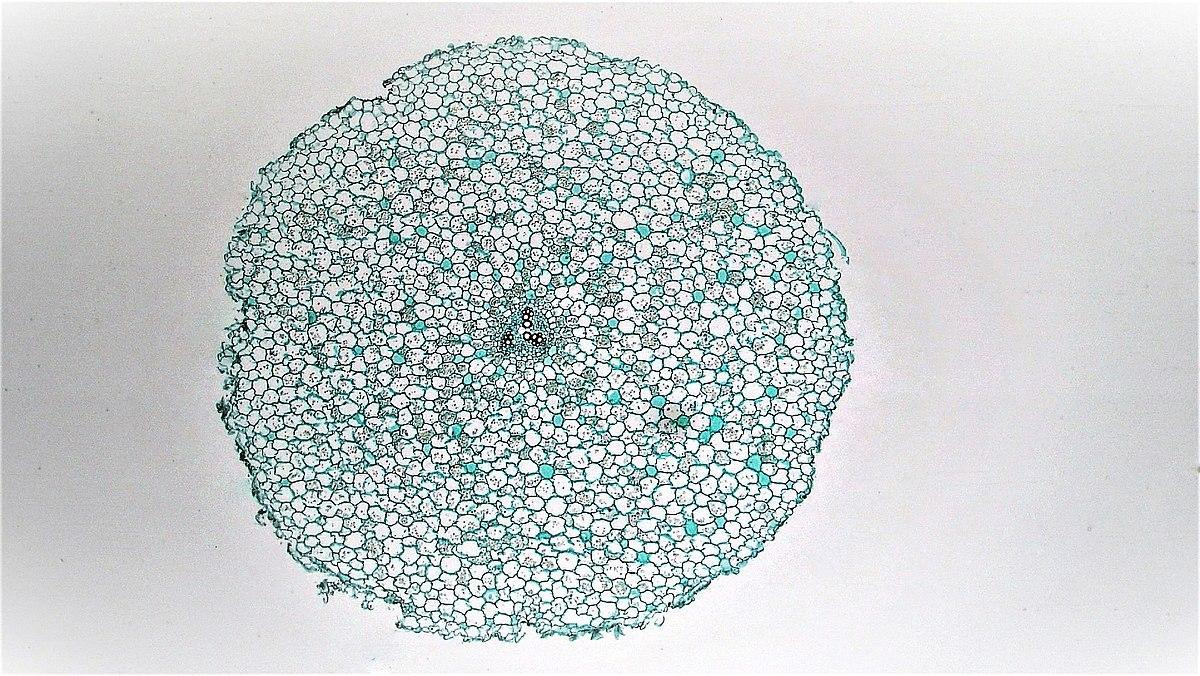
In a transverse section of a dicot root
A. The protoxylem vessels are present towards the periphery and metaxylem vessels are present towards the Centre.
B. The protoxylem vessels are present towards the Centre and the metaxylem vessels are present towards the periphery.
C. Both protoxylem and metaxylem vessels are present towards the Centre.
D. Both protoxylem and metaxylem vessels are present towards the periphery.
Answer
558.6k+ views
Hint: Dicot root is the root which is present in the dicot plants. These roots have tap-root like modifications of the root. This type has the continuous amount of both the xylem and the phloem. Here, we are going to find the correct answer in the transverse section of the dicot root. Through some of the information, it could be found and analyzed.
Complete answer: Dicot is one of the two divisions of the angiosperms. The root is formed by enlarging the radicle of the seed. These are mostly persistent throughout the life of the single plant. Now, coming to its transverse section, this shows the arrangement of the plant tissues from its periphery to its Centre. The following is the diagram of the transverse section of the dicot root and this is mentioned below:

The outermost layer is referred to as rhizodermis. The vascular cambium present here is completely secondary in origin and that originates from the formation of the pericycle tissue. This tissue helps in the regulation of the formation of the lateral roots. These are made up of parenchyma cells. These are devoid of stomata and cuticles. In these roots, the xylem is exarch. This is defined as the protoxylem is away from the center and the metaxylem is towards the center.
So, the correct answer is “Option A”.
Note:
The transverse section of the dicot root helps us in the arrangement of the different tissues from particular way to the exterior in the center. The pericycle helps in the strengthening of the roots. These
also provide protection for the vascular bodies. These are some of the functions of the dicot root.
Complete answer: Dicot is one of the two divisions of the angiosperms. The root is formed by enlarging the radicle of the seed. These are mostly persistent throughout the life of the single plant. Now, coming to its transverse section, this shows the arrangement of the plant tissues from its periphery to its Centre. The following is the diagram of the transverse section of the dicot root and this is mentioned below:

The outermost layer is referred to as rhizodermis. The vascular cambium present here is completely secondary in origin and that originates from the formation of the pericycle tissue. This tissue helps in the regulation of the formation of the lateral roots. These are made up of parenchyma cells. These are devoid of stomata and cuticles. In these roots, the xylem is exarch. This is defined as the protoxylem is away from the center and the metaxylem is towards the center.
So, the correct answer is “Option A”.
Note:
The transverse section of the dicot root helps us in the arrangement of the different tissues from particular way to the exterior in the center. The pericycle helps in the strengthening of the roots. These
also provide protection for the vascular bodies. These are some of the functions of the dicot root.
Recently Updated Pages
Why are manures considered better than fertilizers class 11 biology CBSE

Find the coordinates of the midpoint of the line segment class 11 maths CBSE

Distinguish between static friction limiting friction class 11 physics CBSE

The Chairman of the constituent Assembly was A Jawaharlal class 11 social science CBSE

The first National Commission on Labour NCL submitted class 11 social science CBSE

Number of all subshell of n + l 7 is A 4 B 5 C 6 D class 11 chemistry CBSE

Trending doubts
Differentiate between an exothermic and an endothermic class 11 chemistry CBSE

10 examples of friction in our daily life

One Metric ton is equal to kg A 10000 B 1000 C 100 class 11 physics CBSE

Difference Between Prokaryotic Cells and Eukaryotic Cells

1 Quintal is equal to a 110 kg b 10 kg c 100kg d 1000 class 11 physics CBSE

State the laws of reflection of light




